Introduced earlier this year as Samsung’s flagship phone, the Galaxy S10+ sits behind only the newer S10 5G and Note 10+ in Samsung’s lineup, with its 6.4-inch AMOLED display placing it between the S10 and S10 5G in terms of cost and size. As befits a high-end device, it has solid audio specs, including active noise cancellation with a dedicated microphone and audio tuning by AKG.
We put the S10+ through our rigorous DXOMARK Audio test suite to measure its performance both at recording sound using its built-in microphones and at playing audio back through its built-in speakers. In this review, we’ll break down how it fared in a variety of tests and in several common use cases.
Audio specifications:
- Stereo speakers located at top and bottom of the phone
- Active noise cancellation with dedicated microphone
- Dolby Atmos support, including Dolby Digital and Plus
- Audio tuned by AKG
- High AOP (Acoustic Overload Point) mic
About DXOMARK Audio tests: For scoring and analysis in our smartphone audio reviews, DXOMARK engineers perform a variety of objective tests and undertake more than 20 hours of perceptual evaluation under controlled lab conditions. This article highlights the most important results of our testing. Note that we evaluate both Playback and Recording using only the device’s built-in hardware and default apps. (For more details about our Playback protocol, click here; for more details about our Recording protocol, click here.)
Test summary


The Samsung Galaxy S10+ scored well overall compared to the other Android phones we have tested so far, with an Overall Audio score of 65. That puts it well ahead of the Sony Xperia 1 at 45 and the Honor 20 Pro at 53, although significantly behind the Huawei Mate 20 X’s 75. Impressively, it nearly matches the Overall score of 66 the larger and newer Samsung Note 10+. However, it was definitely below the Apple iPhone XS Max’s score of 74, and weaker across the board than Apple’s newest flagship phone, the iPhone 11 Pro Max.
Breaking down the Overall score, the S10+’s Playback score of 65 indicates that sound reproduction is fairly consistent across all our tests. Frequency response is fairly flat and accurate across our entire measured tonal range. It also does a good job of representing the sound stage (Spatial attribute) of audio sources, though the S10+ doesn’t do as well as the iPhone XS Max in this category.
The S10+’s Dynamic score, an indication of how well it renders high-energy audio, is 3 points lower than the Note 10+’s, making the latter phone a better choice for those who value movies with high-energy sound tracks or music with similar attributes. Amplifying this disparity, the S10+ is also a little lacking in bass power. Noise cancellation is excellent overall, but can result in a slight hissing noise when activated.

Generally speaking, these attributes mean that the S10+ performs slightly better when playing music than when watching movies with high-energy sound tracks, and leaves something to be desired when playing games that feature varied in-game sounds.
Its Recording score of 65 means that the S10+ provides a fairly-balanced audio quality across all our tested use cases, including music, videos with the rear and selfie cameras, audio from a meeting room, and dictating a memo.
In terms of specific recording attributes, the S10+ has the highest-quality tonal reproduction of the devices we have tested to date, with a Timbre score of 81—a point ahead of the iPhone XS Max and ahead of the other Android devices we have tested. It also appropriately renders background noises, giving the S10+ a reasonable Background sub-score of 52. However, the S10+ isn’t as good at isolating the subject being recorded from the background as some of the other phones we’ve tested.
Unfortunately, the S10+ is lacking in recording volume, with by far the lowest Volume sub-score (45) of the first set of devices we have tested so far. There is also some pumping (artificial volume increases and decreases often related to compression) at high volumes. But in short, if you can live with quiet recordings, the S10+ is an excellent option.
Sub-scores explained
The DXOMARK Audio overall score of 65 for the Samsung Galaxy S10+ is derived from the Playback and Recording scores and their respective sub-scores. In this section, we’ll take a closer look at these audio quality sub-scores and explain what they mean for the user.
Playback

Timbre
Samsung Galaxy S10+ (Exynos)
60
89
Our Timbre tests measure how well a phone reproduces sound across the audible tonal range, including bass, midrange, and treble. Overall, the S10+ does a good job of accurately reproducing tones across the full tested range, giving it a Timbre sub-score of 60. As you can see from the chart of frequency response below, though, bass tones are a little weak, while higher frequencies are actually amplified compared to the original audio, especially at soft volumes.
Speaker placement also impacts tonal reproduction. The bottom speaker doesn’t produce as much bass as the top speaker, adding to the device’s issues with bass reproduction. The S10+ is generally at its best tonally when watching a movie, if you can live with the weak bass. It does a solid job on music, especially if placed in landscape orientation. Its weakest use case is gaming, where tonal reproduction is heavily volume-dependent and worse than in other applications.
Our Dynamics tests measure how well a device reproduces the energy level of a sound source, and how precisely it reproduces bass frequencies. The S10+’s Dynamic score of 61 places it in the middle of the pack. Performance was good when playing movie clips, but its score was pulled down by a lack of bass precision, and a poor score in our gaming audio test scenarios.

Spatial
Samsung Galaxy S10+ (Exynos)
63
88
Our Spatial tests measure how well a device accurately portrays the original location of instruments or other sound sources used in a recording. The S10+ does a good job of placing sound sources overall, including balancing them between locations and accurately representing their distance. It is a little weaker at providing a wide sound stage (wideness) or allowing a listener to localize sound sources. This could be an issue when listening to movie soundtracks with a lot of action, or to music played by a large group such as an orchestra.
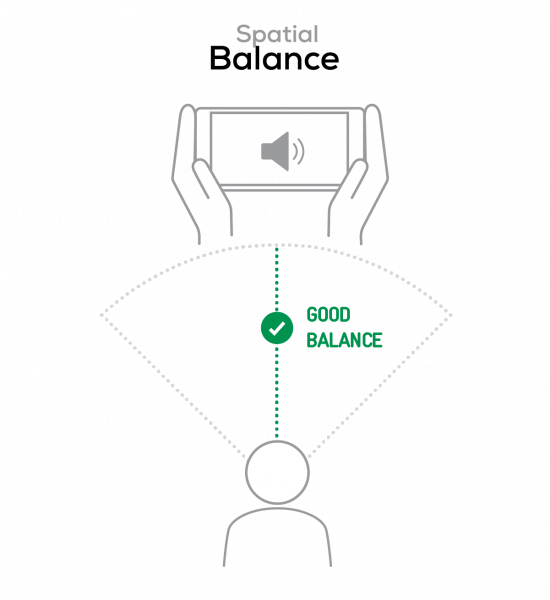
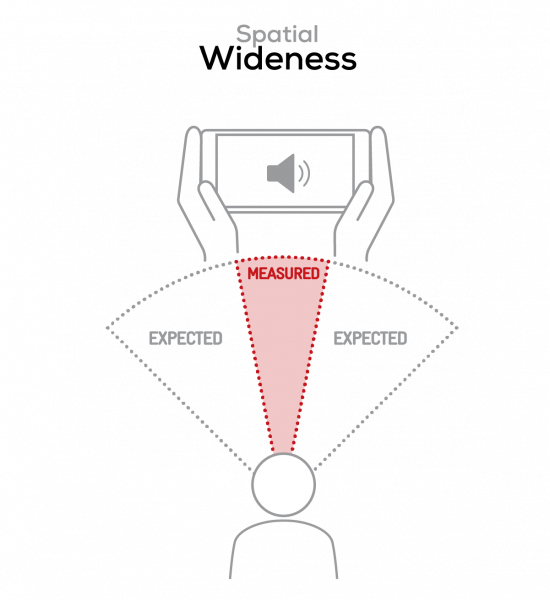
As with its tonal response, the Spatial performance of the S10+ is much stronger in landscape orientation, particularly when listening to rock music. The sound stage has little width and locating audio sources is very difficult when the device is held in portrait mode. It also does fairly well with movie soundtracks, although they are somewhat lacking in wideness. Gaming audio has a reasonable sound state, but is a little weak on balance between the speakers.

Volume
Samsung Galaxy S10+ (Exynos)
66
91
Our Volume tests measure both the overall loudness a device is able to reproduce and how smoothly volume increases and decreases based on user input. The S10+ does a good job of smoothly changing volume levels and producing sufficiently loud output for most use cases, giving it a Volume sub-score of 66, placing it in the middle of the pack of devices we have tested so far. You can see the effect of the range of volume settings in this chart showing the actual loudness (acoustic power) generated for each of the device’s volume steps:
We carried out objective measurements in our laboratories on recordings of both hip-hop and classical music played at the maximum user volume step.
| Hip-Hop | Classical |
| 74.3 dBA | 70.7 dBA |

Artifacts
Samsung Galaxy S10+ (Exynos)
82
113
Our Artifacts tests measure how much source audio is distorted when played back through a device’s speakers. Distortion can occur both because of sound processing in the device and because of the quality of the speakers. In the case of the S10+, it does a good job overall of limiting distortion, helping it achieve a very respectable Artifact sub-score of 82.
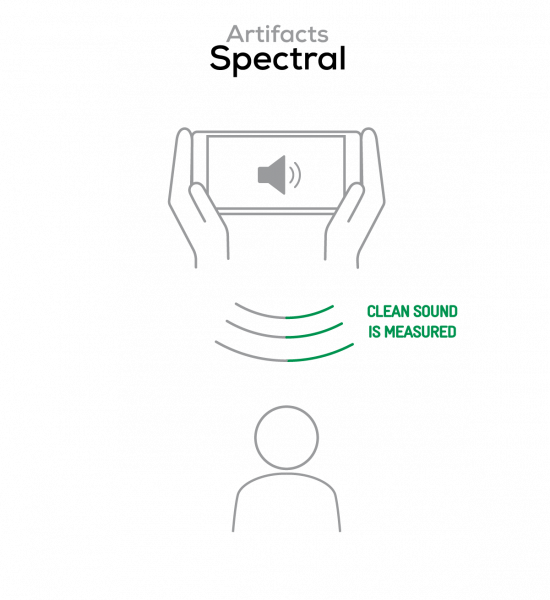
Recording

Timbre
Samsung Galaxy S10+ (Exynos)
81
91
The S10+ does an excellent job overall of accurately recording frequencies across our entire measured tonal range of 20Hz to 20kHz, giving it a Timbre sub-score of 81. That’s the highest of any device we have tested, besting the Apple iPhone XS Max by one point and putting it 13 points ahead of the newer Note 10+.
Using the Video app with the main camera, however, there are some frequency-specific gaps in its response to higher tones, impacting its ability to accurately record music. There is some falloff in high frequencies (treble) when using the memo app to record a meeting in a noisy environment. Offsetting that is very strong bass reproduction in our concert recording tests. Tonal balance was best overall when capturing video and when recording memos. You can see the mostly flat tonal response when recording in this graph, along with the slight loss in higher frequencies:

Dynamics
Samsung Galaxy S10+ (Exynos)
68
81
The S10+ does an excellent job of accurately preserving the energy levels of both music and voice when recording, earning it one of the highest Dynamics sub-scores for any phone we have tested so far, tied by only the Mate 20 X. In particular, it has a good signal-to-noise ratio (SNR) when placed close to the audio source. The S10+ also does well at preserving the fidelity of the sound envelopes of audio sources.

Spatial
Samsung Galaxy S10+ (Exynos)
53
78
Our Spatial sub-score measures how well a device creates a recording that allows a listener to accurately place sound sources within the real-world soundscape. The S10+ doesn’t do a particularly good job here. Its Spatial sub-score of 53 is tied with the iPhone XS Max, but behind the Honor 20 Pro (57), the Mate 20 X (68), the Sony Xperia 1 (60), and the iPhone 11 Pro Max (54).
The relatively low score is due in part to particularly poor recreation of the width of a soundscape (directivity) when the selfie camera makes recordings. The S10+ also doesn’t do a good job of placing speakers when used to record meetings. We refer to the ability to hear where a sound should be coming from as “localizability,” which is illustrated in this comparison graphic:
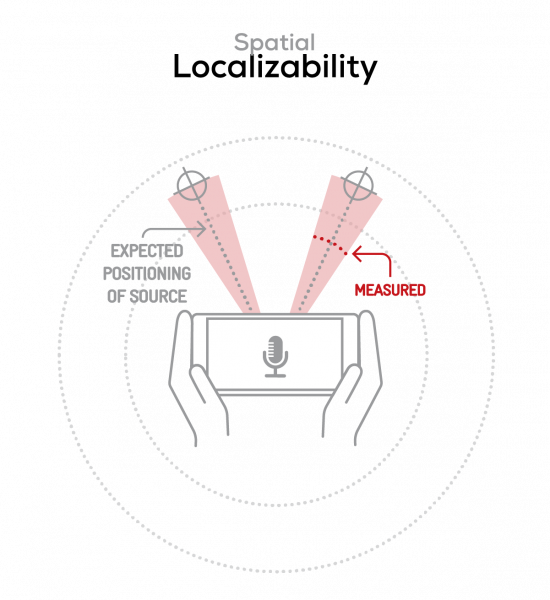
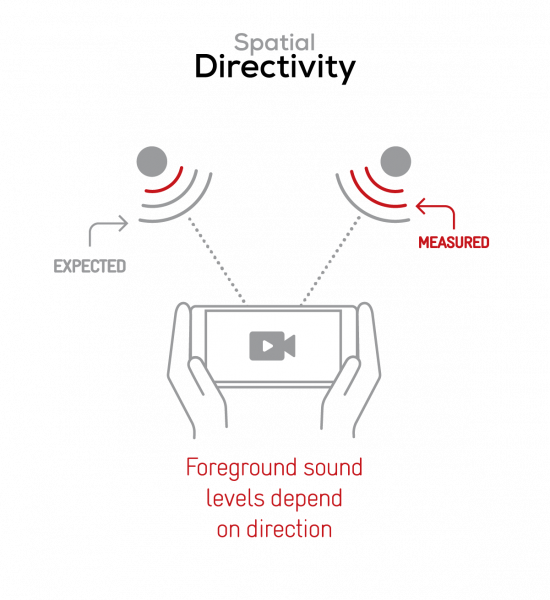

Volume
Samsung Galaxy S10+ (Exynos)
45
99
Recording volume is a definite weak spot for the S10+. While the loudness of its recordings is about average overall, it gets a relatively low Volume sub-score of 45 in part because of unwanted noise when recording at high volumes. Here are our test results, measured in LUFS (loudness unit full scale); note that results lower than –24 are unacceptable.
| Meeting | Life Video | Selfie Video | Memo |
| -27.1 LUFS | -19.2 LUFS | -17.9 LUFS | -22.5 LUFS |

Artifacts
Samsung Galaxy S10+ (Exynos)
61
97
Audio recorded with the S10+ suffers from a variety of artifacts, especially at high volumes—giving it one of our lower Artifact sub-scores of 61, behind most of the other phones we’ve tested. You can hear some of the artifacts for yourself in this sample recording:
It is worth noting that the S10+ did not suffer from poor recording when the user accidentally placed a hand over the area of the microphone, which on some other smartphones caused occlusion (a drop in overall sound). It did suffer from a delay when resuming a video recording after a pause.

Background
Samsung Galaxy S10+ (Exynos)
52
60
With professional recording equipment, highly-directional microphones are often used to isolate sound sources and keep out background noise. Smartphones, however, rely on the same small microphones for everything, so suppressing background noise also relies heavily on the device’s audio processing. The S10+ achieves an average score for this attribute, rendering background sounds fairly cleanly, with good tonal balance and few artifacts.
This said, the S10+ suffers from poor directivity—meaning that it doesn’t do as well as it could at letting you hear yourself clearly over the background noise in a selfie video, for example.
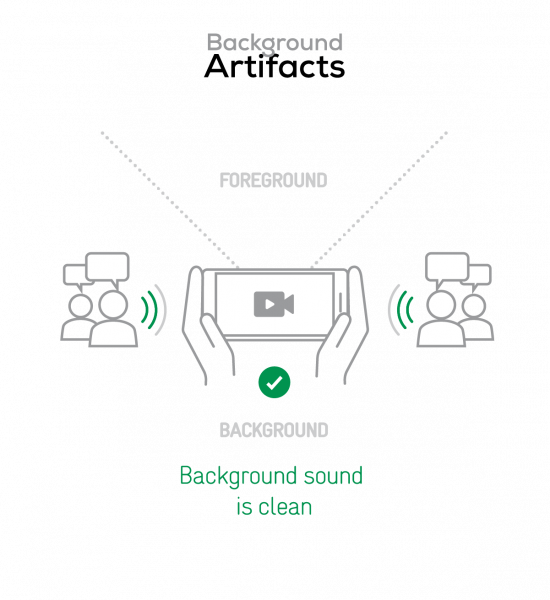
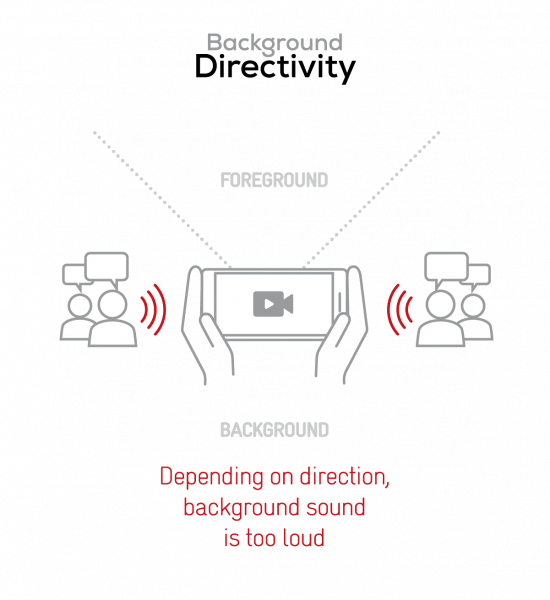
Conclusion: Excellent option for audio
The Samsung Galaxy S10+ puts in an overall solid performance for both recording and playing back audio in most use cases. A lack of bass power may be a problem for some, especially when coupled with the device’s relative lack of overall volume. Those weaknesses are countered by a good sound stage and a strong and very balanced recording performance in our tests.
Playback
Pros
- Good overall performance
- Decent spatialization
Cons
- Lack of bass power
- Lack of overall loudness
- Relatively poor gaming performance
Recording
Pros
- Flat frequency response
- Accurate tonal rendering
- Good overall spatial performance
- Few artifacts
- Excellent for recording meetings or memos
Cons
- Lack of bass
- Slight pumping effect on some recordings
- Poor directivity


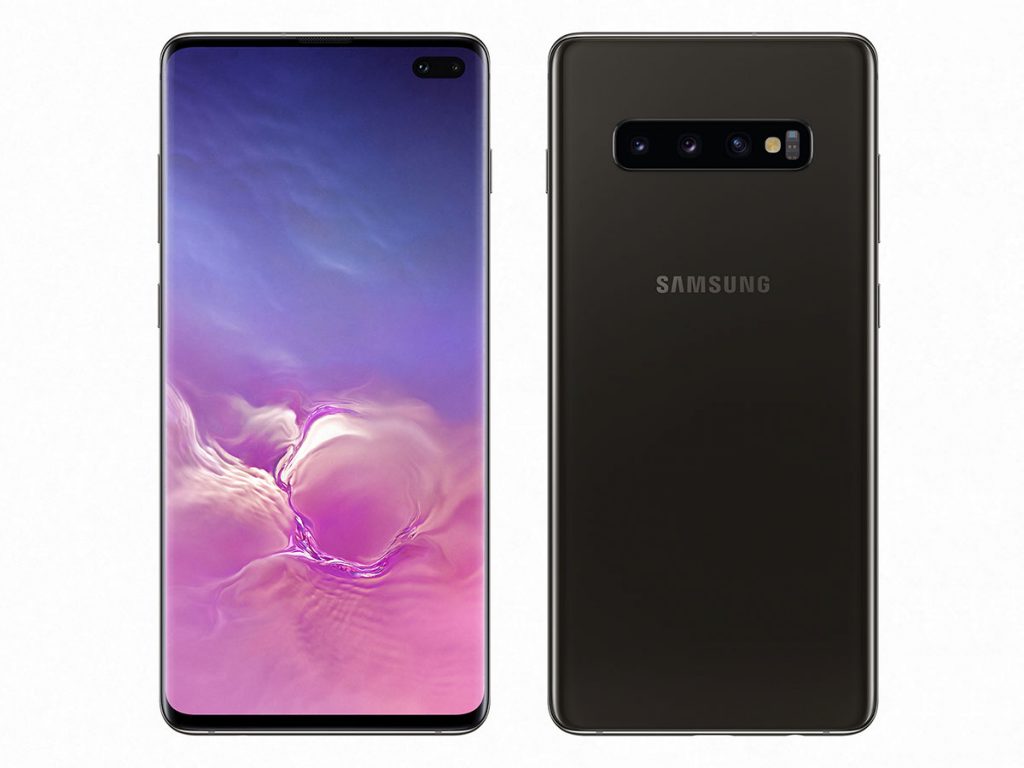
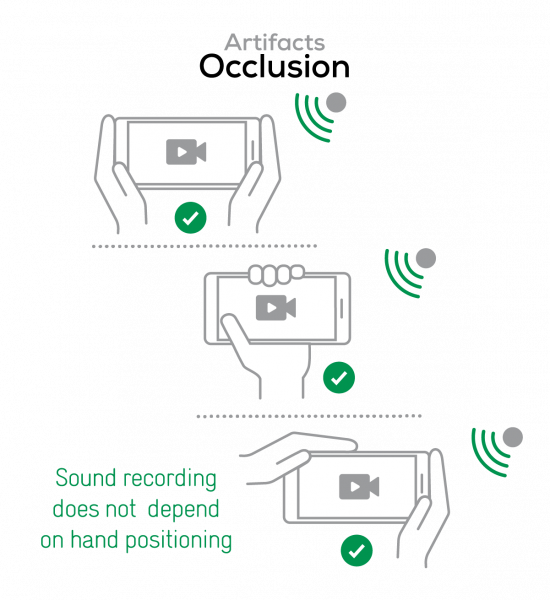
DXOMARK encourages its readers to share comments on the articles. To read or post comments, Disqus cookies are required. Change your Cookies Preferences and read more about our Comment Policy.